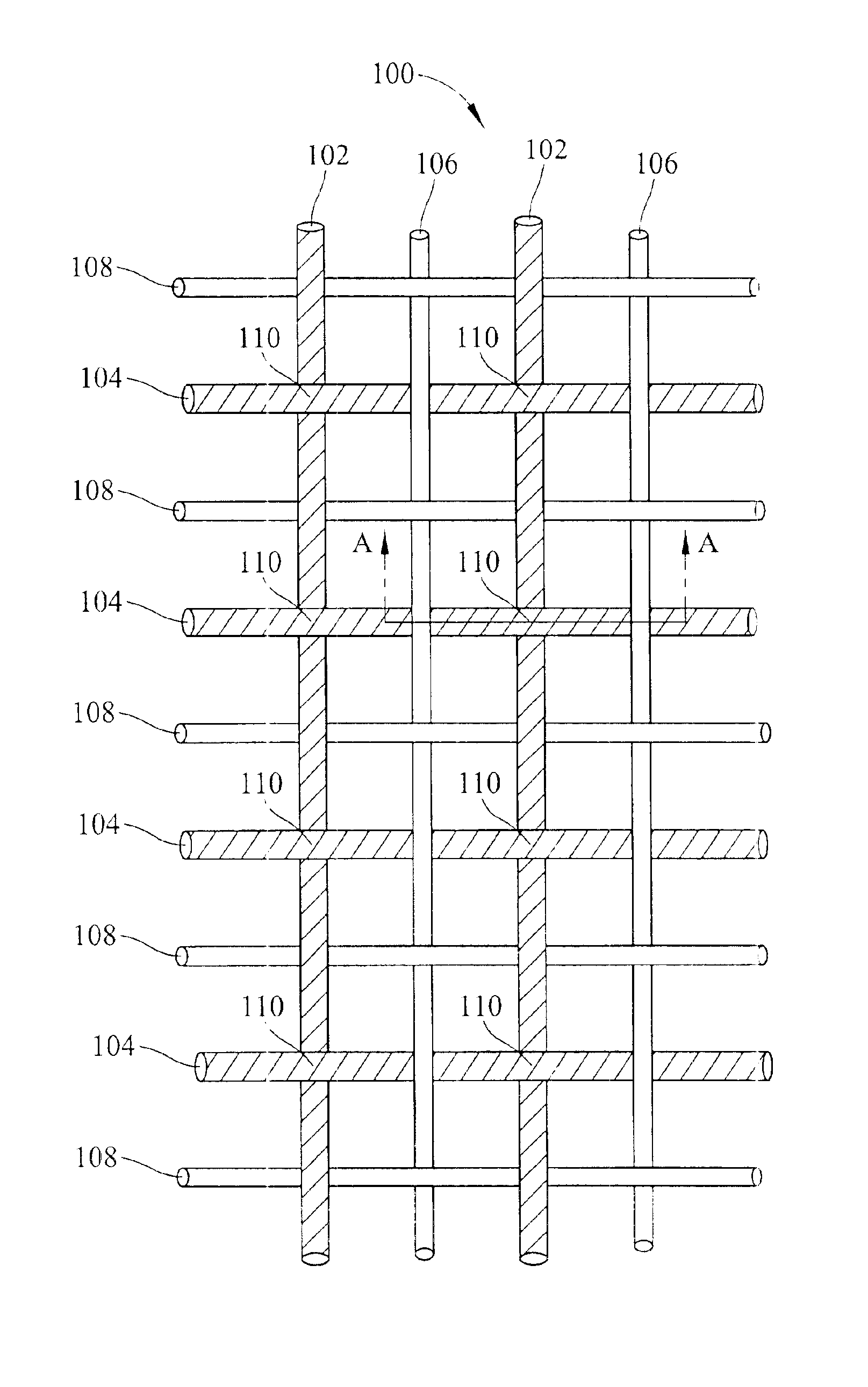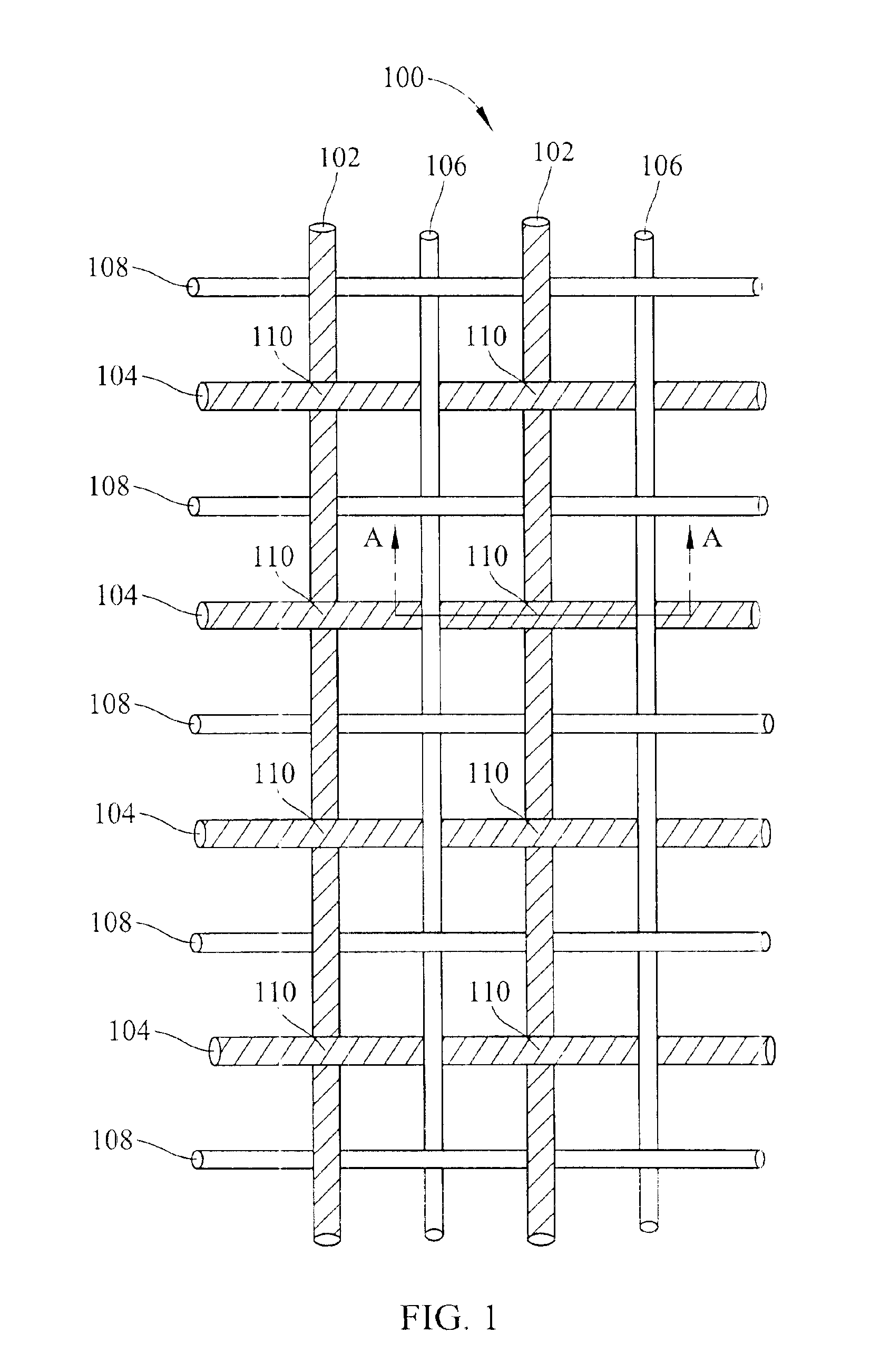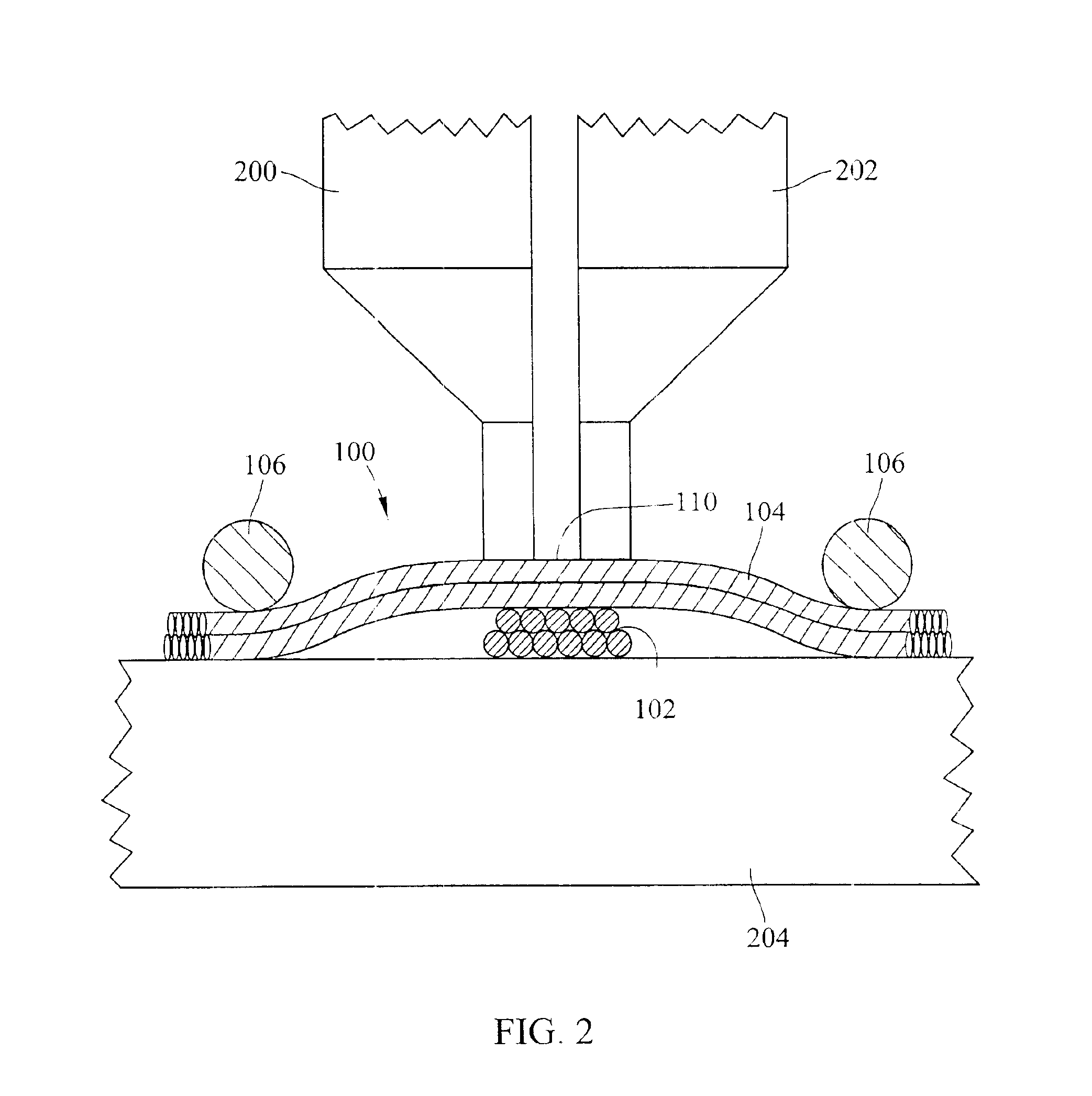Methods and systems for selectively connecting and disconnecting conductors in a fabric
a technology of selective connection and disconnection, applied in the field of forming, can solve the problems of increasing dc resistance, affecting the ac and dc characteristics of the connection point, and affecting the uniformity of the resistance between the contact point, so as to achieve the effect of improving both ac and dc characteristics
- Summary
- Abstract
- Description
- Claims
- Application Information
AI Technical Summary
Benefits of technology
Problems solved by technology
Method used
Image
Examples
Embodiment Construction
FIG. 1 illustrates a fabric including conductive and non-conductive fibers according to an embodiment of the present invention. In FIG. 1, a fabric 100 includes a plurality of conductors 102 and 104 and a plurality of non-conductive fibers 106 and 108. Conductors 102 and 104 may be any type of material capable of conducting an electrical signal. For example, conductors 102 and 104 may be metallic conductors, such as copper, gold, steel, aluminum, silver, or iron. Alternatively, conductors 102 and 104 may be conductive polymers or polymers with conductive coating. Conductors 102 and 104 may be single-wire conductors, coaxial conductors, mono or multi-filament conductive yarn constructions, twisted pair conductors, braided conductors, or any other form of conductor, depending on desired AC and DC characteristics. Non-conductive fibers 106 and 108 may be any type of non-conductive fiber suitable for forming a fabric. For example, non-conductive fibers 106 and 108 may each comprise poly...
PUM
| Property | Measurement | Unit |
|---|---|---|
| electrical energy | aaaaa | aaaaa |
| metallic | aaaaa | aaaaa |
| conductive | aaaaa | aaaaa |
Abstract
Description
Claims
Application Information
 Login to View More
Login to View More - R&D
- Intellectual Property
- Life Sciences
- Materials
- Tech Scout
- Unparalleled Data Quality
- Higher Quality Content
- 60% Fewer Hallucinations
Browse by: Latest US Patents, China's latest patents, Technical Efficacy Thesaurus, Application Domain, Technology Topic, Popular Technical Reports.
© 2025 PatSnap. All rights reserved.Legal|Privacy policy|Modern Slavery Act Transparency Statement|Sitemap|About US| Contact US: help@patsnap.com



